Table of Contents
Michael Phelps is a living legend of the swimming pool. He had worked hard for his goals since childhood. He trained for several hours a day and worked non-stop to be better than his opponents. Furthermore, he became the most successful Olympian of all time, but that didn’t automatically ensure his life’s happiness. At the time of his greatest success, he suffered from mental health problems, which are very common among top athletes. What was behind Michael Phelps’s phenomenal achievement?
Why did Michael choose swimming?
He was born on June 30, 1985, in Baltimore, and was named after his father as Michael Fred Phelps the Second. In 1994, his parents divorced and Michael, along with older sisters Whitney and Hilary, remained in the care of their mother Debbie. She had led her children into sports since they were little, and when little Michael had to decide how to spend his free time, swimming was the obvious choice. His role models were older sisters who swam competitively, while he also admired the elite swimmers Tom Malchow and Tom Dolan. In addition, the sport helped him expend excess energy, which was also linked to his diagnosis of ADHD, attention deficit hyperactivity disorder, in the sixth grade.
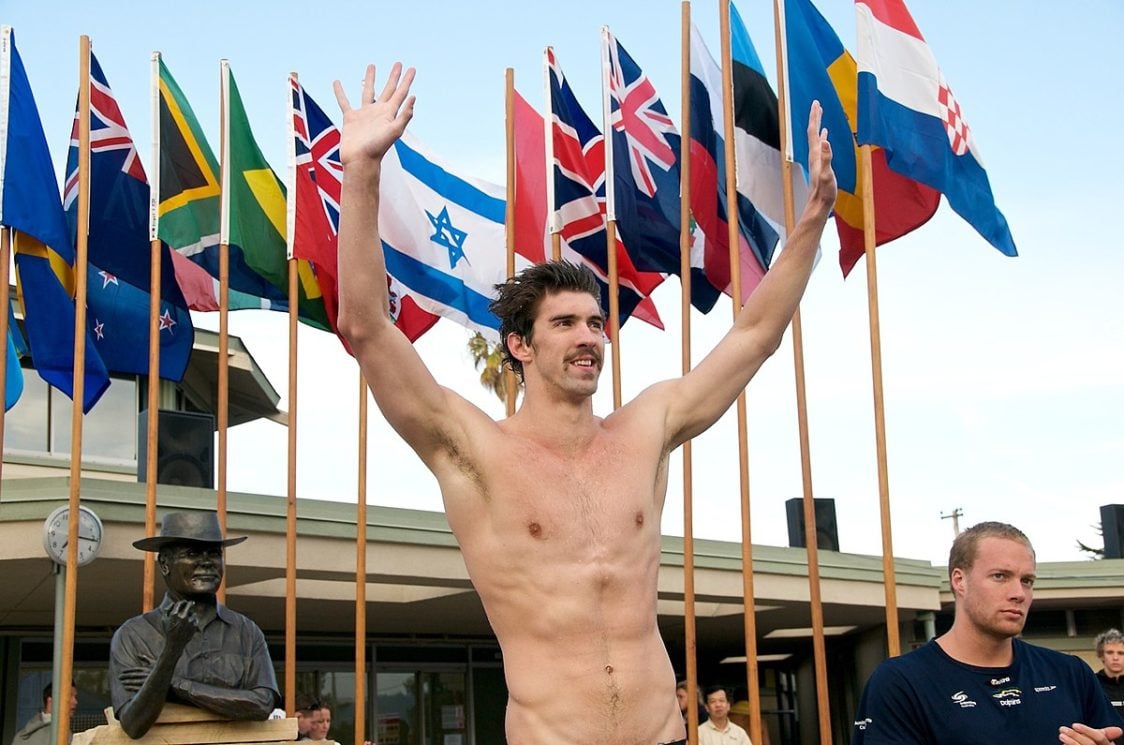
https://commons.wikimedia.org/wiki/File:Michael_Phelps_(3628423012).jpg
What were the beginnings of the future world champion?
Michael started swimming at age 7. At the time, he was still afraid to fully submerge his head, so it’s no surprise that the first swimming style he mastered was a sign. He gradually lost his fear and began to improve rapidly. At the age of 10, three years since he started swimming, he was beating his peers. He even held the national record for swimming in the 100-metre butterfly in his age category at the time.
Perhaps because of this, the coaches of the local elite North Baltimore Aquatic Club swim team, which Michael had joined, noticed him at the time. There he went under the wing of respected swim coach Bob Bowman. He recognized Michael’s talent and enormous desire to win. So, he planned hard training sessions that supported the development of his potential. Under expert guidance, Phelps’ form quickly picked up and at the age of 14 he made the United States National B Team. In the year 2000, Michael became the youngest ever professional swimmer to race under the flag of the United States of America.
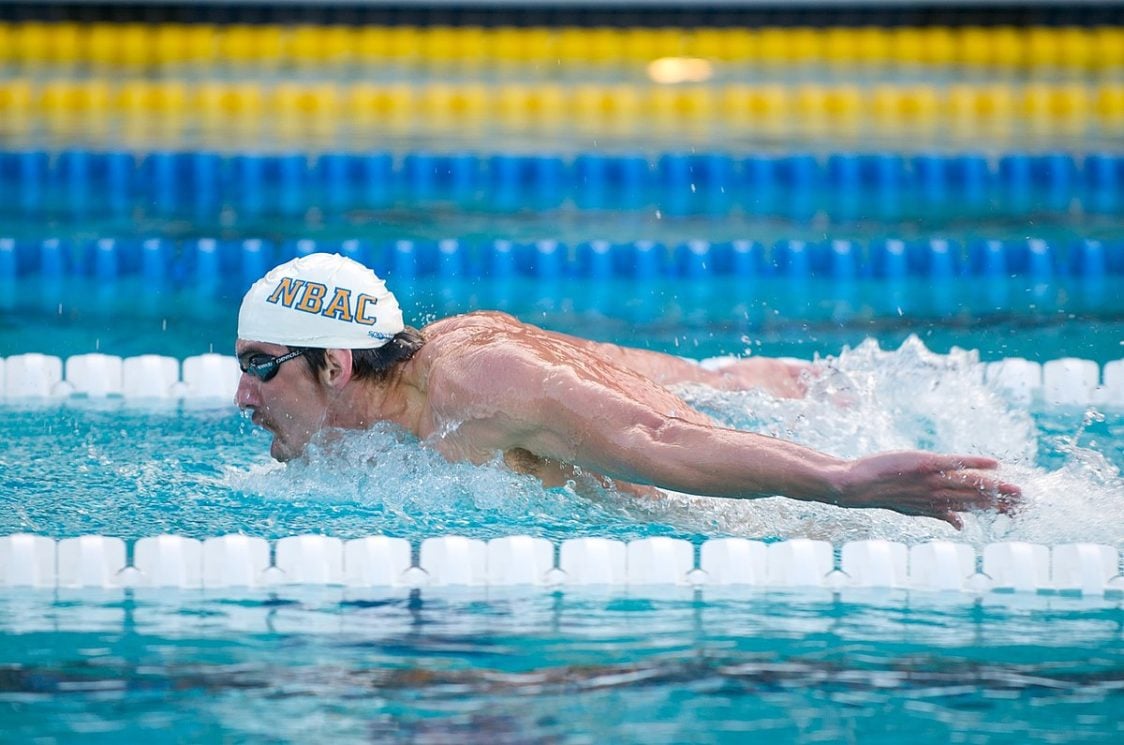
https://commons.wikimedia.org/wiki/File:Michael_Phelps_in_action_(3628423222).jpg
How did Phelps first Olympics pan out?
The year 2000 has yet another significance for Phelps. Something had happened that he had only dreamed of before. Under the banner of the United States, he qualified for the Olympic Games held in Sydney. Still just 15 years old, he became the youngest member of the American team in 68 years. Phelps failed to win a medal at his first Olympics, but reached the final in the 200-metre butterfly event, where he finished fifth. It was a great performance for such a young age.
Michael, motivated by the experience of his first Olympics, continued to work on himself, and a year later at the World Championships, the 200-metre butterfly was the dominating event. He even won in time, which marked a new world record. Michael had big plans for his sporting career. His most famous statements include:
” I want to test my maximum and see how much I can do. And I want to change the world of swimming. “
You might be interested in these products:
And he did. He was picking up success after success, and sports fans from all over the world were beginning to notice him. In 2004, he went to Athens for his second Olympics. There he managed unprecedented success, taking a total of 6 gold medals home to his native Baltimore. He managed to build on this feat in another four years in Beijing.
That year, he outperformed himself, and the entire sports world watched with bated breath as he won one swimming event after another and took an incredible eight gold medals from this Olympics. Phelps broke Mark Spitz’s previous record of winning seven gold medals that year, becoming the most successful Olympian of all time.
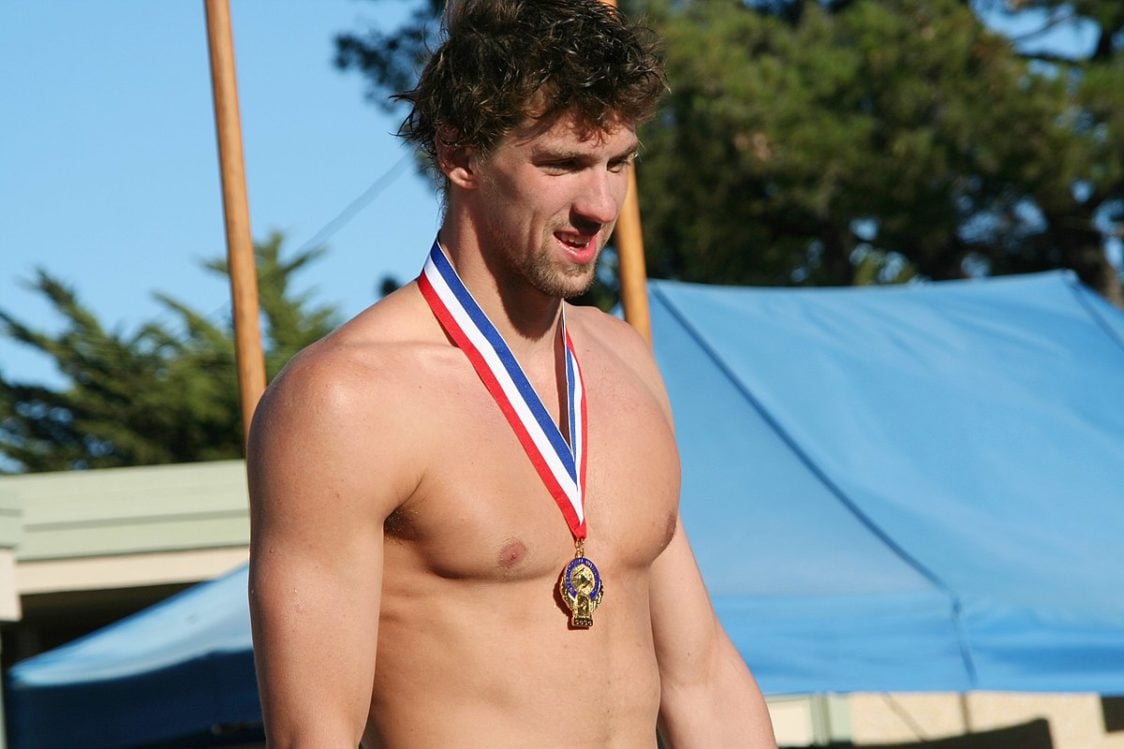
https://commons.wikimedia.org/wiki/File:Michael_Phelps_(6294329466).jpg
He was also successful at the 2012 London Olympics, where he listened to the National Anthem for the winner a total of four times. At that moment, he felt he had fulfilled his potential, and after the final Olympic ceremony he announced that his sporting career was ending at the age of 27.
However, he did not last very long in his sporting retirement and two years later in 2014 he announced his return to competitive swimming. His comeback to professional sport ranks among the most successful and accomplished in history. At the 2016 Olympics in Rio de Janeiro, he took the honorary position of flag bearer and captain of the United States team. He became the first American ever to win a spot on five Olympic national teams. During these Games, his medal collection expanded to include another 5 gold and 1 silver medal.
Overall, Phelps has won 28 Olympic medals in his career, including 23 gold medals, 3 silver and 2 bronze. No other athlete can boast such a collection.
Michael had been swimming competitively since he was a kid, and he had clearly set goals to achieve this ever since. He wrote them on paper to keep an eye on them at all times and did everything he could to make them come true. A big part of his phenomenal success was his swimming figure. He is 193 cm tall, has a long chest and arms, plus incongruously short legs with huge feet with size 49.5 shoes. To add to this, he has so-called rubber joints, which means that the ankle bends more than normal, making him able to cover a larger area in the water.
Having a perfectly built body to move in the water is not enough to win gold medals from world races. The hours of extremely demanding training Michael had done under the supervision of long-time coach Bob Bowman contributed significantly to the excellent results. He had 2-3 workouts a day that totalled 5-6 hours. In the peak stage of preparation for the races he swam an incredible 80 kilometres a week, that is a total of 1,600 Olympic swimming pools that measure 50 metres in length.
He improved his swimming skills in the water, but he also worked hard out of the water. He undertook strength training at least three times a week. Michael was extremely disciplined and never missed an opportunity to work on being an even better swimmer. Throughout his career, he followed the motto: “If you want to be the best, you have to do things that other people aren’t willing to do.”
At the same time, Michael was aware that he had to rest, too, after hard workouts. He tried to sleep at least eight hours each night, and took a 2-3 hour nap during the day between training sessions. He was always looking for tips for better regeneration and wondering how to be even better. For example, he took home a hyperbaric chamber in which he slept. This mimics the conditions of being at high altitudes that promote the production of red blood cells, which can lead to better oxygenation of the muscles and other body tissue.
He also encouraged his regeneration with a hearty diet. At the time of his greatest success, there was speculation in the media that Phelps would eat 12,000 kcal in a day.
He refuted this assumption, but also admitted that he had to have an intake of 8,000-10,000 calories a day from his diet to maintain his weight. These are values that no one can afford to maintain a healthy weight.
Most people, including some top athletes, would successfully eat their way to morbid obesity with such a diet. For breakfast, for example, he ate enough food to last a day. It consisted of five courses, which included three sandwiches with fried eggs, cheese, fried onions, mayonnaise, and a further omelette of five eggs. For dessert, he had a bowl of porridge, three slices of sugar-coated French toast, and three chocolate pancakes. He drank it all down with two cups of coffee. During the rest of the day he drank a large quantity of energy drinks, and his stomach still had to process a kilo of pasta, several other hearty sandwiches, and pizza. It’s certainly not appropriate for ordinary people to copy his diet. But it clearly worked for Michael.
Michael Phelps also celebrates great achievements in his personal life. He is happily married and has three sons in 2021. It can make his story seem like the perfect story. Despite all the sports trophies, an incredible number of Olympic medals and a beautiful, loving family, Michael has been dealing with mental health problems in the form of depression and anxiety for most of his life.
By his own admission, he was at his worst in 2012 after first announcing the end of his career. For he had fallen into a great depression, and even had suicidal thoughts. Fortunately, he realized he needed help and began therapy to help him through the difficult period. Unfortunately, mental health problems are no exception for top athletes. Since retiring from his professional career, Michael has devoted himself intensively to educating himself about mental health.
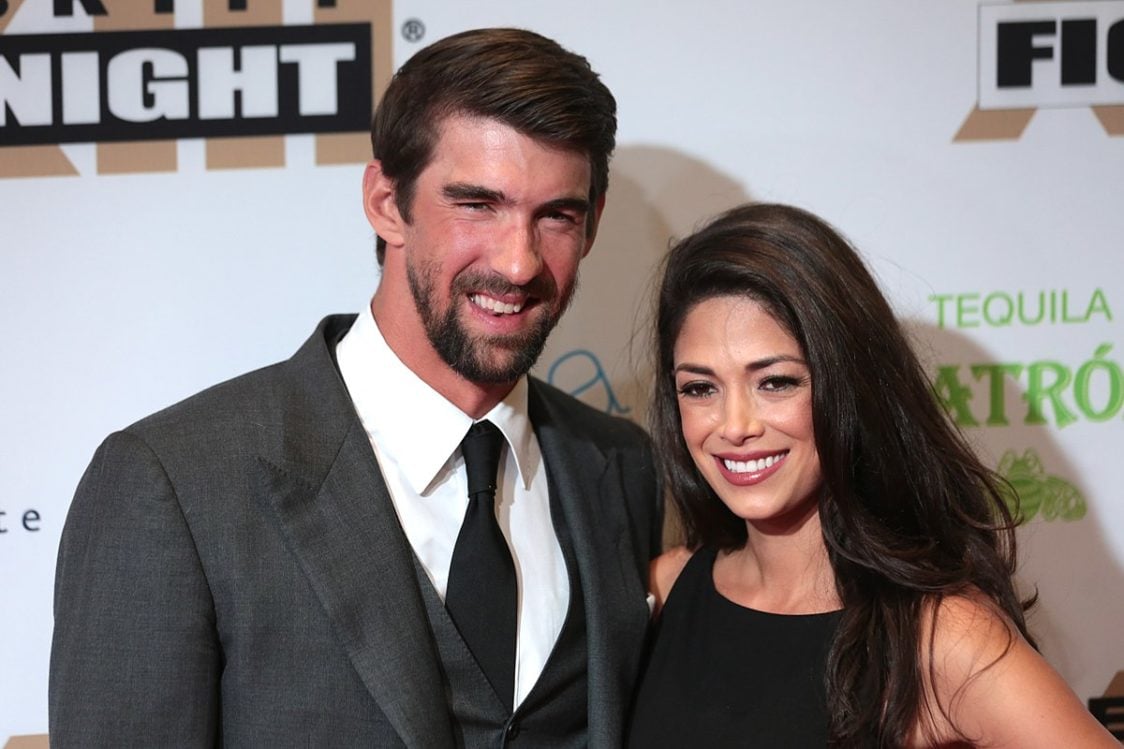
https://commons.wikimedia.org/wiki/File:Michael_Phelps_%26_Nicole_Johnson_by_Gage_Skidmore.jpg
What does the present life of history’s most successful Olympian look like?
After retirement from his professional sports career, he is dedicated to supporting young athletes and promoting a healthy lifestyle, as part of a foundation he founded after the successful Beijing Olympics. He has his own brand of swim gear and has also been involved in the development of an emoji app with swimming motifs. He is still actively playing sports, focusing on his family and sharing his daily activities on social media.
Did you find any inspiration in the story of the phenomenal Michael Phelps? His determination and the discipline with which he managed to pursue his sporting goals can be a model for you. Share your opinion of Michael’s sporting achievements with us, and if you liked this article, don’t forget to share it amongst your friends.
[1] Abbate, E. The Real-Life Diet of Michael Phelps, Who Is No Longer Eating 10,000 Calories a Day. GQ. – https://www.gq.com/story/real-life-diet-michael-phelps
[2] CBS News.The Golden Boy. – https://www.youtube.com/watch?v=zJ_LXsPFens&ab_channel=CBSNews
[3] Fina.org – www.fina.org/swimming/records
[4] Fishman, J. M. Michael Phelps. LernerClassroom.
[5] How Michael Phelps Became the Greatest Swimmer of All Time. – https://myswimpro.com/blog/2020/09/11/how-michael-phelps-became-the-greatest-swimmer-of-all-time/
[6] Linden, J. – Coach reveals tricks he used to prepare Phelps https://www.reuters.com/article/us-olympics-swimming-phelps-idUSSP27658220080820
[7] Biography. Michael Phelps. – https://www.biography.com/athlete/michael-phelps
[8] Aspire Channel Swim. Michael Phelps’ 12,000 Calorie Diet – https://www.aspirechannelswim.co.uk/blog/michael-phelps-12-000-calorie-diet
[9] Olympic Channel. Michael Phelps Biography, Olympic Medals, Records and Age.– https://olympics.com/en/athletes/michael-phelps-ii
[10] Michael Phelps Shares His Experiences and Struggles Achieving Excellence – https://www.youtube.com/watch?v=ErcP2VIbgus
[11] ESPN.Com. Michael Phelps: „This is the most overwhelmed I’ve ever felt". – https://www.espn.com/olympics/story/_/id/29186389/michael-phelps-most-overwhelmed-ever-felt
[12] SportsEngine. Michael Phelps Workout and Diet. – https://www.sportsengine.com/article/swimming/michael-phelps-workout-and-diet
[13] ESPN.Com. Phelps using hyperbaric chamber in recovery. – https://www.espn.com/olympics/swimming/story/_/id/7556022/michael-phelps-using-hyperbaric-chamber-aid-recovery
[14] Staff, E. 50 Interesting Facts About Michael Phelps. – https://thefactfile.org/michael-phelps-facts/

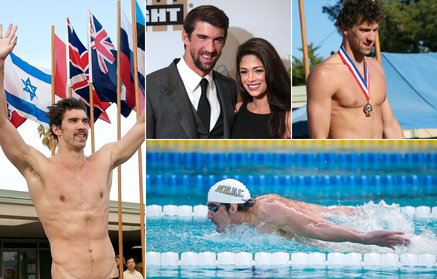
Add a comment